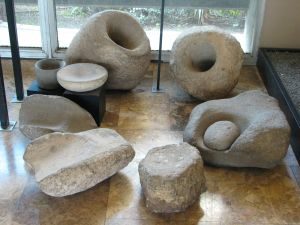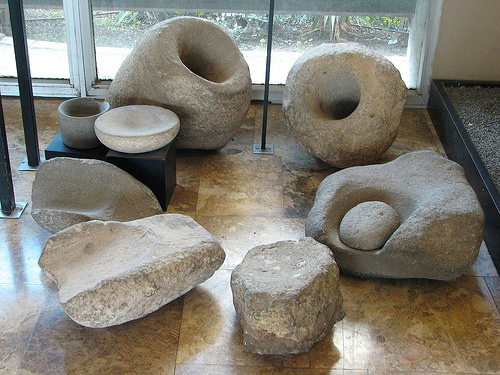
A team of researchers have concluded that the Younger Dryas, the worldwide climatic downturn between 12,900 and 11,500 BP that many scientists suggest marked a return to glacial conditions, was cool but not as dry as previously thought in the Eastern Mediterranean region.
Led by Gideon Hartman of the University of Connecticut, the researchers developed a new set of seasonal climatic data for the southern Levant using carbon isotope measurements taken from the tooth enamel of gazelles killed by Natufian hunters as evidenced at Early and Late Natufian archaeological sites of the Hayonim and Hilton Tachtit caves in western Galilee, Israel. The values fall before and during the Younger Dryas, and provide a proxy measure for water availability in the area during that time period. The results reveal that, although climate conditions were cooler, consistent with the generally accepted characterization of the Younger Dryas, they were not dryer than the preceding Bølling-Allerød period. The researchers further hypothesize that the cooler conditions prompted the establishment of Natufian settlements in the Jordan Valley, where the warmer, more stable environment created conditions more favorable to higher wild cereal productivity. This, the researchers suggest, may have facilitated the transition to agriculture.
___________________________________________
Above, as exhibited in the Dagon Museum, mortars from Natufian culture and grinding stones from the Neolithic pre-pottery phase. Hanay, Wikimedia Commons
___________________________________________
The Natufian culture thrived from 12,500 to 9,500 BC in the Levant, before the advent of agriculture. The Natufians are thought to have been the ancestors of the builders of the first Neolithic settlements of the region. They were hunters, but they also exploited wild cereals. Some evidence has suggested that they actually cultivated rye at Tell Abu Hureyra, a site that is thought to have provided the earliest evidence of agriculture in the world.
The study* is published in the Proceedings of the National Academy of Sciences.
_________________________________________________________
*“Hunted gazelle evidence cooling, but not drying, during the Younger Dryas in the southern Levant,” by Gideon Hartman, Ofer Bar-Yosef, Alex Brittingham, Leore Grosman, and Natalie Munro.
_________________________________________________________

______________________________________________
Travel and learn with Far Horizons.
____________________________________________
This richly illustrated issue includes the following stories: Recent findings shedding new light on the whereabouts of the remains of Philip of Macedon, father of Alexander the Great; how an archaeologist-sculptor is bringing bones of the dead back to life; archaeologists uncovering town life at the dawn of civilization; an exclusive interview with internationally acclaimed archaeologist James M. Adovasio about what makes the Meadowcroft Rockshelter prominent in the ongoing search for the first Americans; what archaeologists are finding at the site of the ancient city of Gath, the home town of the biblical Philistine giant, Goliath; and how scientists are redrawing the picture of human evolution in Europe. Find it on Amazon.com.









